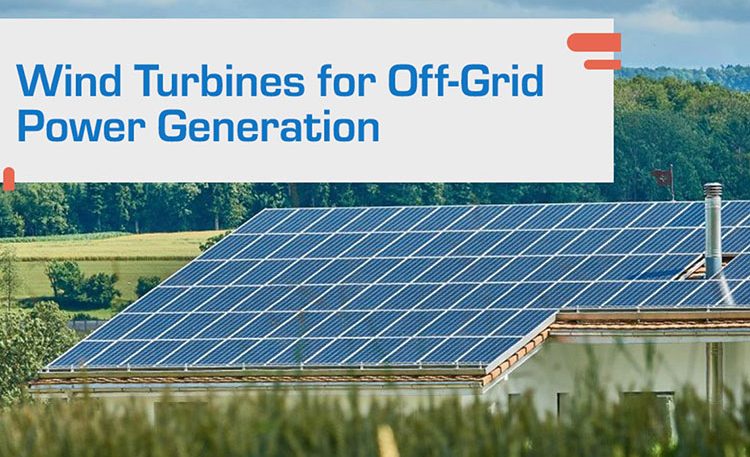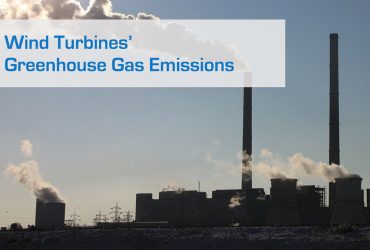
Wind turbines: Autonomous power supply?
What is off-grid power supply?
Generally speaking, the term ‘off-grid’ refers to buildings, communities or a lifestyle that are not connected to some or all public utilities. Usually, the main focus is on off-grid electric power, but sometimes, it can even include water and sewer systems.
While traditionally, diesel generators have been a well-known choice for off-grid power supply, their environmental impact is a serious point of concern. Modern stand-alone power systems will consist of one or more sources of renewable energy with batteries or diesel generators as a backup power supply. In order to make off-grid systems viable, several control and energy storage will be installed.
What are the advantages and disadvantages of off-grid power supply?
Independence from the electric grid
The biggest and most obvious advantage of using an off-grid power supply is independence from the electric grid. For people living in remote areas, it allows to bypass the high costs of creating the infrastructure necessary to hook up to the grid, which is around tenths of thousands of dollars per mile of distance. In under-developed and developing countries, off-grid power systems are increasingly used as a reliable and often the only way to supply people with electricity.
Even for people living in urban environments, having independent power supply can be an attractive option. Off-grid energy systems are not affected by any blackouts of the power grid. Furthermore, it can be a more environmentally friendly option, depending on the energy sources used by the electric grid and by the stand-alone system.
Costs
All these advantages come at a price, both literally and figuratively. Figuring out how much electric power is used by a particular building or household is necessary prior to purchasing a system capable of covering the requirements. Despite saving money in the long run, this can be a costly one-time investment.
Moreover, installing an off-grid power system entails more than mounting a solar panel or wind turbine on the roof and calling it good. Batteries and different control hardware have to be installed, which increases the overall cost by about a third compared to a grid-connected system of the same power output.
Additional equipment
Most of the additional equipment needed to build an off-grid power system is part of the so-called “balance-of-system”. The purpose of installing the balance-of-system is to handle seasonal and daily fluctuations in both power supply and consumption. On one hand, the sun does not always shine with the same intensity, neither does the wind always blow on. On the other hand, many devices in our homes are turned on and off frequently throughout the day.
One of the central technological pieces required in the balance-of-system is a battery, which stores energy when there is a surplus and provides power when consumption surpasses the momentary supply. To make sure that the battery isn’t damaged, a charge controller is necessary as well. If the system produces direct current (DC), a power converter is necessary since most electronic appliances function on alternative current (AC) at certain voltage. Proper grounding, surge protection, and safety equipment are also crucial parts of any reliably and safely operating power system.
What renewable energy sources are most commonly used in off grid power systems?
Most stand-alone power-systems operate using one or more of the following options:
Solar Power / Photovoltaics
Especially around the equator, photovoltaics are often the only energy source used in off-grid systems. Given a lot of solar exposure, they can provide lots of electric power while being silent, easy to install, and requiring low maintenance— advantages resulting from the fact that solar panels are non-moving power generators.
Since solar exposure varies greatly by location and is generally scarce in winter, it usually remains only part of the solution for off-grid power systems further north.
Wind energy
Giving suitable wind conditions, small-scale wind turbines are currently a less frequently used option, but they carry great potential especially during weather conditions and seasons that are unsuitable for solar energy generation.
Even more than photovoltaics do, wind turbine energy output varies greatly under different environmental conditions. That is why for each location, it is worth taking the local topography and wind speeds into consideration when selecting suitable wind turbines. Since wind turbines typically have moving parts, any particular design needs to be well thought-through in order to minimize the potential noise emission and maintenance needs.
Hydropower
Hydropower is a more reliable source of energy than wind and light. However, it is rarely used because it requires specific environmental conditions including a stream with enough altitude difference and flow to provide energy. This makes it attractive for a small number of locations only.
How exactly can wind turbines operate as an off-grid system?
Regarding entirely off-grid power systems, the combination of a wind turbine, solar panel, and lead-acid battery as a so-called ‘hybrid system’ is usually made out to be the most effective and environmentally-friendly option (by life-cycle assessment) available. Oftentimes, wind and solar resources are seasonally complementary and reliable when combined into the same system. Since the combination decreases fluctuation in power output, the battery will be able to work within its optimal charging level for an extended share of time and therefore have a longer lifespan.
It is definitely worth noting that the best solution varies greatly across different locations. While solar panels have been used as the only source of off-grid power around the equator, the same might apply to small-scale wind turbines in coastal areas or in places with the suitable topology for high wind speeds.
It is also a safe practice to have a connection to the grid as your backup option. If you choose to adopt a middle course, it is possible to evade batteries and the heavy reliability on weather conditions while picking the renewable energy sources most appealing to you and most suitable for your location.
Related Content
In order to evaluate the sustainability of wind turbines comprehensively, it is important to understand how they are manufactured and operate. You can then get...
